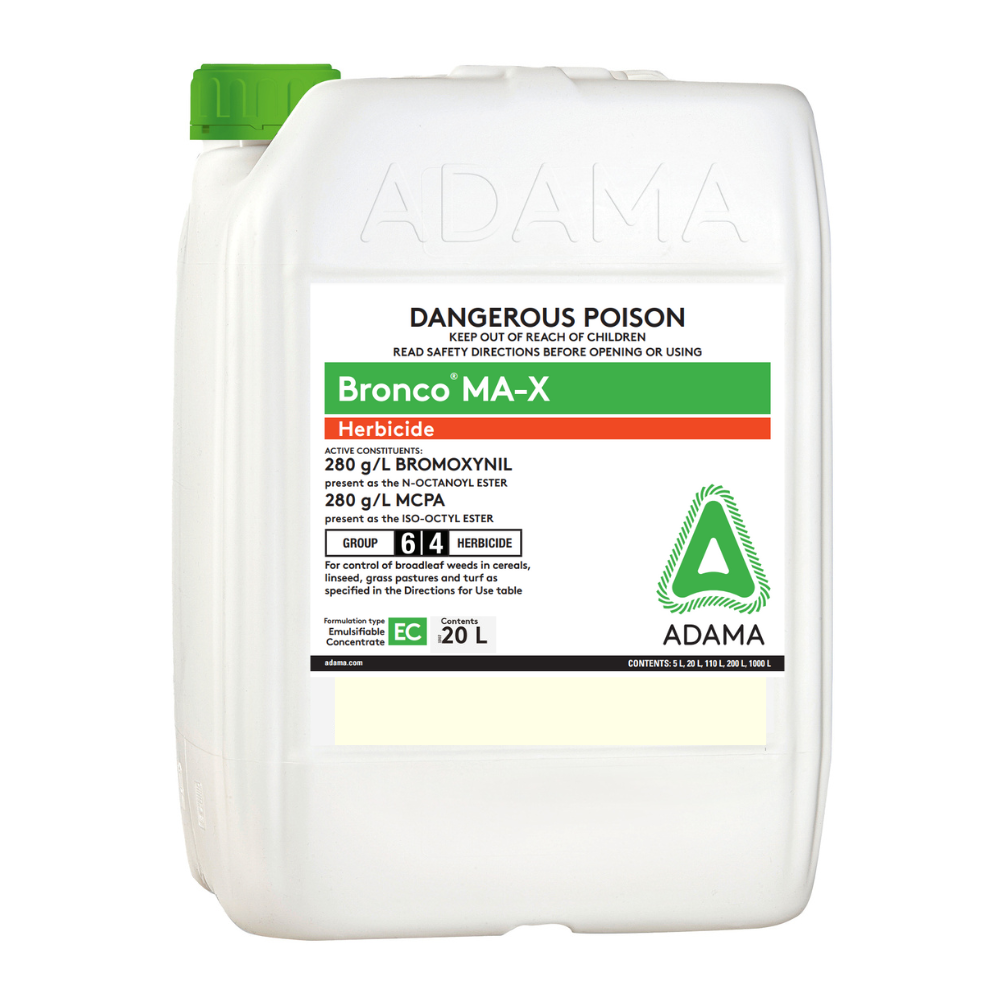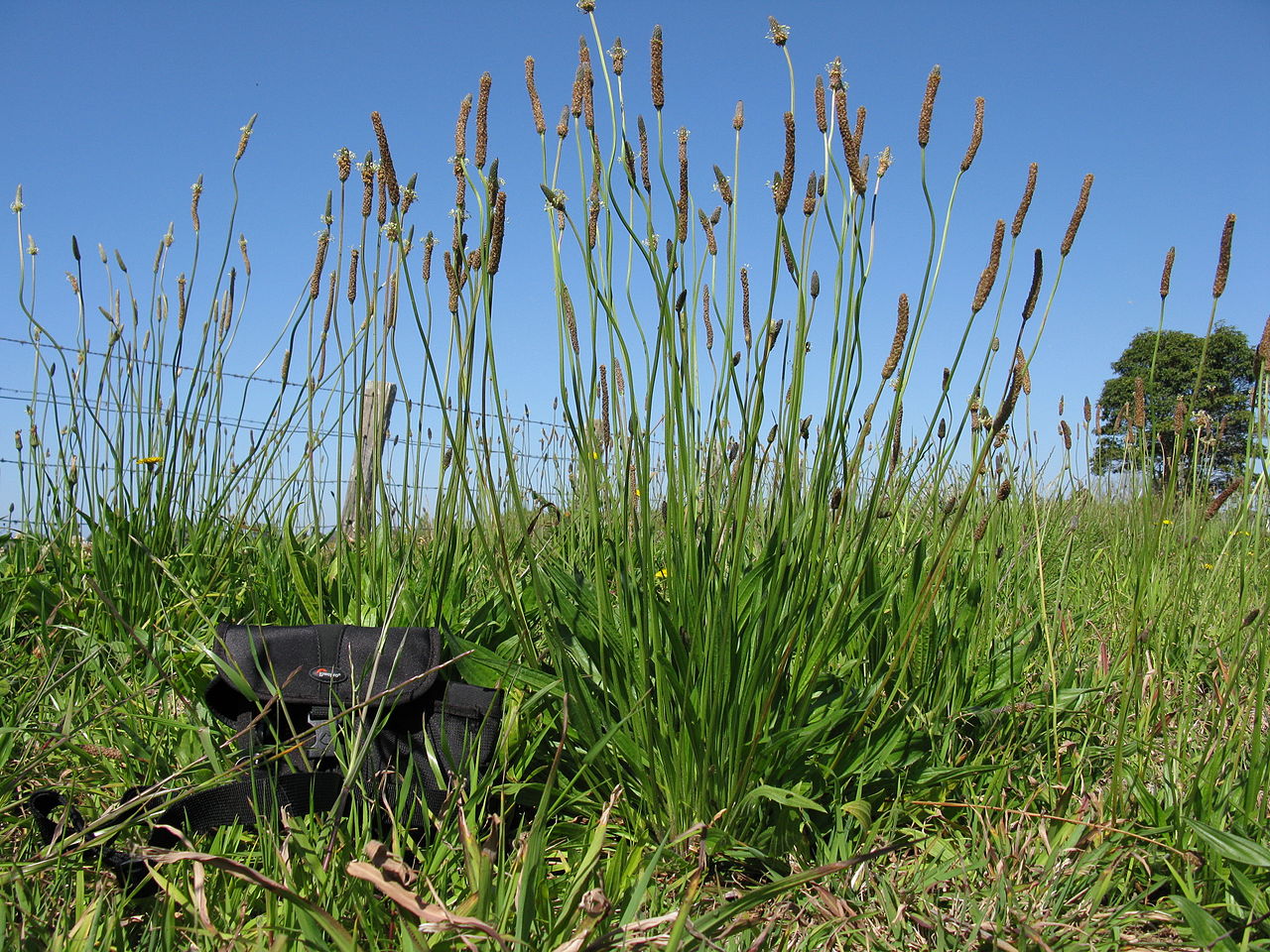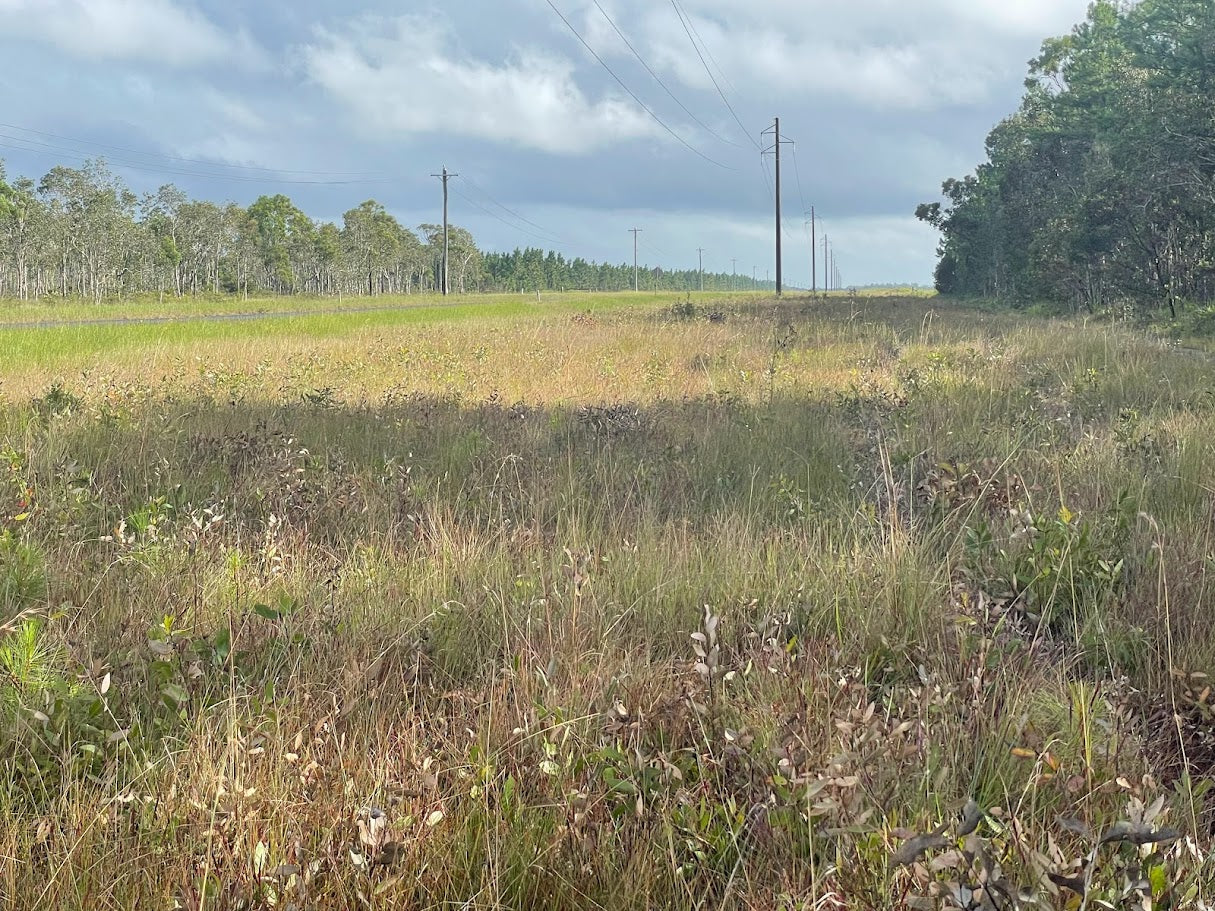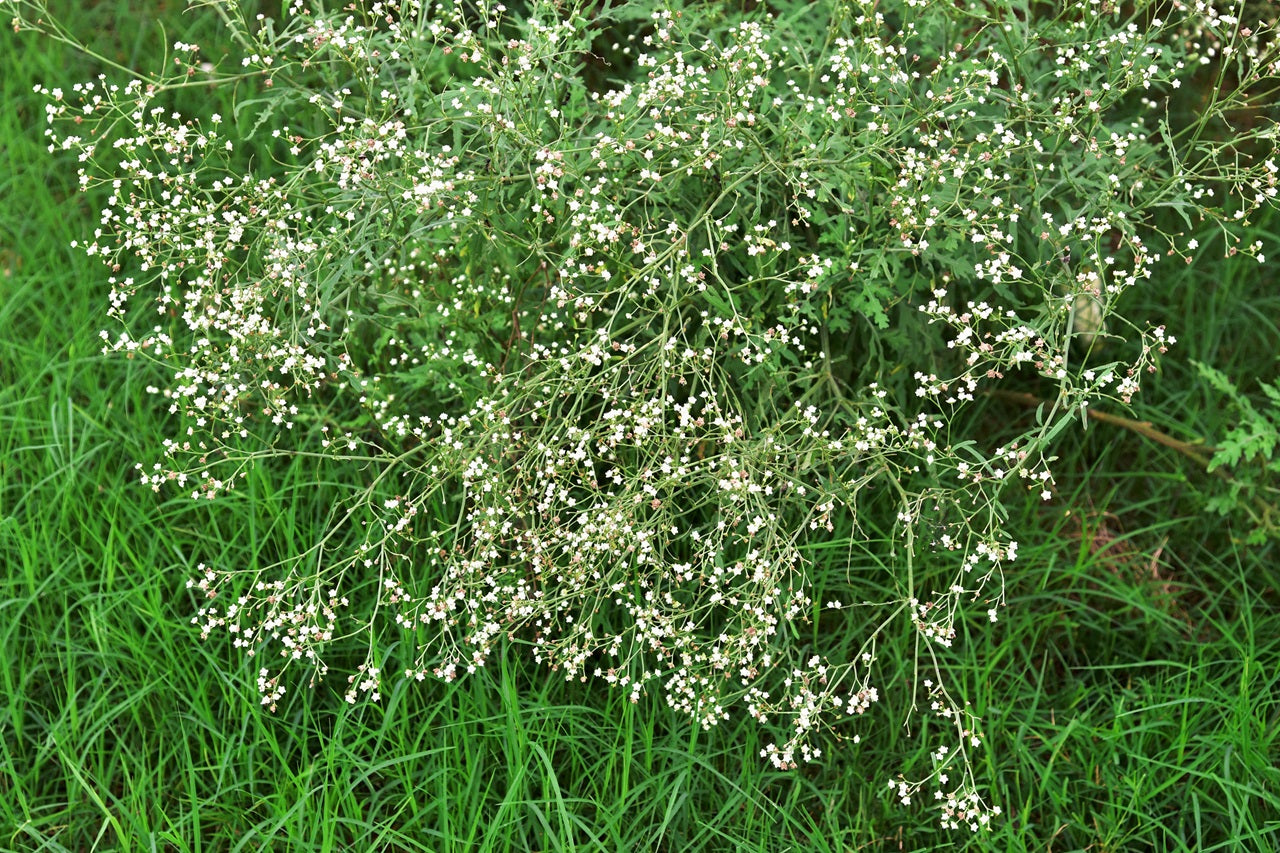
Adama Bronco MA-X 20L Bromoxynil MCPA
Group 6 | 4 Herbicide
Bronco MA-X Herbicide is used to control broadleaf weeds in cereals, linseed, grass pastures, and turf.
Key Features:
-
Controls a wide range of broadleaf weeds in cereals, linseed, pastures, and turf.
-
Contains 280 g/L Bromoxynil and 280 g/L MCPA as active ingredients.
-
Classified as a Group 6 and Group 4 herbicide, targeting plant cell growth.
-
Effective on young, actively growing weeds for optimal control.
-
Can be applied using boom spraying, aerial application, and knapsack spraying.
-
Rainfast within three hours of application.
-
Compatible with selected herbicides for broader weed control.
-
Withholding period of 8 weeks for grazing and cutting in pastures and cereals.
-
Does not affect cereal crop growth when used as directed.
-
Safe for use on established turf species including couch, kikuyu, paspalum, buffalo, fescue, bent, and ryegrass.
Maximising Performance:
-
Apply to actively growing weeds to achieve the best results.
-
Use correct water volume to ensure full coverage of weed foliage.
-
Avoid application during hot, dry, or waterlogged conditions.
-
Do not apply if rain is expected within three hours to prevent wash-off.
-
Use higher rates for larger weeds or dense infestations.
-
Follow proper tank-mixing procedures when combining with other herbicides.
-
Avoid spraying under windy conditions to reduce the risk of drift onto sensitive crops.
-
Ensure sprayer calibration for accurate application rates.
-
Use a minimum of 50 L per hectare for cereals and at least 500 L per hectare for turf.
-
Regularly monitor treated areas for weed regrowth and apply follow-up treatments if necessary.
Weeds Controlled:
Broadleaf Weeds
-
Amsinckia (Amsinckia spp.)
-
Capeweed (Arctotheca calendula)
-
Chamomile (Matricaria matricarioides)
-
Charlock (Sinapis arvensis)
-
Corn Gromwell (Buglossoides arvensis)
-
Fat Hen (Chenopodium album)
-
Field Madder (Sherardia arvensis)
-
Hexham Scent (Melilotus indicus)
-
Horned Poppy (Glaucium flavum)
-
Indian Hedge Mustard (Sisymbrium orientale)
-
Lesser Swinecress (Coronopus didymus)
-
Mexican Poppy (Argemone mexicana)
-
Mintweed (Salvia reflexa)
-
Paterson’s Curse (Echium plantagineum)
-
Rough Poppy (Papaver hybridum)
-
Saffron Thistle (Carthamus lanatus)
-
Shepherd’s Purse (Capsella bursa-pastoris)
-
Slender Thistle (Carduus tenuiflorus, Carduus pycnocephalus)
-
Tree Hogweed (Polygonum patulum)
-
Turnip Weed (Rapistrum rugosum)
-
Wild Radish (Raphanus raphanistrum)
-
Wild Turnip (Brassica tournefortii)
Vining and Climbing Weeds
-
Black Bindweed (Polygonum convolvulus)
-
Three-horned Bedstraw (Galium tricornutum)
-
Cleavers (Galium aparine)
Mustard and Related Weeds
-
Common Peppercress (Lepidium hyssopifolium)
-
Mustards (Sisymbrium spp.)
Small Herbaceous Weeds
-
Purple Calandrinia (Calandrinia menzieslii)
-
Fumitory (Fumaria spp.)
-
Wireweed (Polygonum aviculare)
-
Mountain Sorrel (Oxalis acetosella)
-
Common Sowthistle (Sonchus oleraceus)
Thistles and Spiny Weeds
-
Threecornered Jack (Doublegee) (Emex australis)
-
Variegated Thistle (Silybum marianum)
Turf Weeds
-
Bindy-eye AKA Bindii (Calotis hispidula)
-
Catsear (Hypochoeris radicata)
-
Common Plantain (Plantago spp.)
-
Creeping Buttercup (Ranunculus repens)
-
Cudweed (Gnaphalium spp.)
-
Dandelion (Taraxacum officinale)
-
Fleabane (Conyza spp.)
-
Jo-Jo (Onehunga Weed) (Soliva pterosperma)
-
Clover (Trifolium spp.)
-
Oxalis (Soursob) (Oxalis spp.)
SHORT DESCRIPTION
For the control of broadleaf weeds in cereals, linseed, grass pastures and turf.
ACTIVE INGREDIENTS
280 g/L Bromoxynil,
280 g/L MCPA
APPLICATION INFORMATION
Application Information and Rates
Application Methods
Bronco MA-X Herbicide is applied using boom spraying, aerial application, and knapsack spraying for controlling broadleaf weeds in cereals, linseed, pastures, and turf.
Restraints
Do not apply to crops, pastures, or weeds under stress from dry or excessively wet conditions.
Do not apply to diseased or frost-affected crops or if frosts are imminent.
Do not apply if rain is expected within three hours of application.
Do not use spraying equipment carried on the back.
Boom Spraying for Broadacre Crops
Apply in a spray volume of 50 to 200 L of water per hectare.
For linseed, use a minimum of 220 L of water per hectare.
Ensure even coverage of weeds for optimal effectiveness.
Aerial Application
Apply a minimum of 22 L of water per hectare.
Use suitable spray equipment to ensure complete and even coverage.
Avoid application in high winds or conditions that may cause spray drift.
Turf Application
For boom spraying, mix 4.3 L in 500 L of water per hectare.
For knapsack spraying, mix 43 mL per 100 square meters in 15 L of water.
Ensure thorough coverage of weeds without excessive run-off.
Application Rates for Weed Control in Crops and Pastures
Rates vary depending on the target weed species, growth stage, and level of infestation.
Apply 540 mL to 1.43 L per hectare for most broadleaf weeds.
Use higher rates for larger weeds or dense infestations.
Application Rates for Turf
Apply 4.3 L per hectare in a minimum of 500 L of water.
For knapsack spraying, apply 43 mL per 100 square meters in 15 L of water.
Repeat applications may be required for persistent weeds.
Withholding Periods
Do not graze or cut for stock food within 8 weeks of application in cereals and pastures.
No withholding period required for crop harvest when used as directed.
WEEDS CONTROLLED
Weeds Controlled
Bronco MA-X Herbicide is used to control broadleaf weeds in cereals, linseed, grass pastures, and turf. Below is a list of weeds controlled, categorized by weed type, along with their scientific names.
Broadleaf Weeds
Amsinckia - Amsinckia spp.
Capeweed - Arctotheca calendula
Chamomile - Matricaria matricarioides
Charlock - Sinapis arvensis
Corn Gromwell - Buglossoides arvensis
Fat Hen - Chenopodium album
Field Madder - Sherardia arvensis
Hexham Scent - Melilotus indicus
Horned Poppy - Glaucium flavum
Indian Hedge Mustard - Sisymbrium orientale
Lesser Swinecress - Coronopus didymus
Mexican Poppy - Argemone mexicana
Mintweed - Salvia reflexa
Paterson’s Curse - Echium plantagineum
Rough Poppy - Papaver hybridum
Saffron Thistle - Carthamus lanatus
Shepherd’s Purse - Capsella bursa-pastoris
Slender Thistle - Carduus tenuiflorus, Carduus pycnocephalus
Tree Hogweed - Polygonum patulum
Turnip Weed - Rapistrum rugosum
Wild Radish - Raphanus raphanistrum
Wild Turnip - Brassica tournefortii
Vining and Climbing Weeds
Black Bindweed - Polygonum convolvulus
Three-horned Bedstraw - Galium tricornutum
Cleavers - Galium aparine
Mustard and Related Weeds
Common Peppercress - Lepidium hyssopifolium
Mustards - Sisymbrium spp.
Small Herbaceous Weeds
Purple Calandrinia - Calandrinia menzieslii
Fumitory - Fumaria spp.
Wireweed - Polygonum aviculare
Mountain Sorrel - Oxalis acetosella
Common Sowthistle - Sonchus oleraceus
Thistles and Spiny Weeds
Threecornered Jack (Doublegee) - Emex australis
Variegated Thistle - Silybum marianum
Turf Weeds
Bindy-eye - Calotis hispidula
Catsear - Hypochoeris radicata
Common Plantain - Plantago spp.
Creeping Buttercup - Ranunculus repens
Cudweed - Gnaphalium spp.
Dandelion - Taraxacum officinale
Fleabane - Conyza spp.
Jo-Jo (Onehunga Weed) - Soliva pterosperma
Clover - Trifolium spp.
Oxalis (Soursob) - Oxalis spp.
Weeds Not Controlled
Bronco MA-X does not control woody weeds, perennial grasses, or aquatic weeds.
PRODUCT LABEL SUMMARY
Herbicide Label Summary
APVMA Approval No: 69186/RV2024
Product Name: Bronco MA-X Herbicide
Active Constituents:
280 g/L Bromoxynil (present as the N-octanoyl ester)
280 g/L MCPA (present as the iso-octyl ester)
Formulation Type: Emulsifiable Concentrate (EC)
Herbicide Group: Group 6 and Group 4 Herbicide
Purpose: Control of broadleaf weeds in cereals, linseed, grass pastures, and turf
Dangerous Poison
Keep out of reach of children
Read safety directions before opening or using
Directions for Use
Restraints
Do not apply if crops, pastures, or weeds are stressed due to dry or excessively moist conditions.
Do not apply to diseased or frost-affected crops or if frosts are imminent.
Do not apply if rain is expected within three hours.
Do not apply using spraying equipment carried on the back.
Situations and Crops
Wheat, Barley, Cereal Rye, Oats, Triticale, Linseed, and Grass Pastures
Established Couch, Kikuyu, Paspalum, Buffalo, Fescue, Bent, and Rye Lawns
Weeds Controlled
Amsinckia, Capeweed, Chamomile, Charlock, Corn Gromwell, Fat Hen, Field Madder, Hexham Scent, Horned Poppy, Indian Hedge Mustard, Lesser Swinecress, Mexican Poppy, Mintweed, Paterson’s Curse, Rough Poppy, Saffron Thistle, Shepherd’s Purse, Slender Thistle, Tree Hogweed, Turnip Weed, Wild Radish, Wild Turnip, Black Bindweed, Common Peppercress, Mustards, Purple Calandrinia, Fumitory, Threecornered Jack, Variegated Thistle, Wireweed, Mountain Sorrel, Three-horned Bedstraw, Cleavers, Common Sowthistle, Bindy-eye, Catsear, Common Plantain, Creeping Buttercup, Cudweed, Dandelion, Fleabane, Jo-Jo (Onehunga), Clover, Oxalis
Application Rates
Rates range from 540 mL per hectare to 1.43 L per hectare depending on weed size and growth stage.
For turf applications, mix 4.3 L in 500 L of water per hectare for boom spraying or 43 mL per 100 square meters in 15 L water for knapsack spraying.
Ensure full coverage of weeds for optimal results.
Withholding Periods
Cereals and Pastures: Do not graze or cut for stock food for 8 weeks after application.
Crop Harvest: Not required when used as directed.
General Instructions
Mixing
Half-fill the spray tank with water, add the required amount of product, and agitate thoroughly before adding the rest of the water.
Application
Boom Sprayer: Ensure proper calibration to achieve correct application rates.
Cereals: Apply 50 to 200 L of water per hectare.
Linseed: Apply a minimum of 220 L of water per hectare.
Turf: Apply a minimum of 500 L of water per hectare.
Aerial Application: Apply a minimum of 22 L of water per hectare.
Compatibility
Compatible with metsulfuron methyl, chlorpyrifos, dicamba, dimethoate, tralkoxydim, diclofop-methyl, and MCPA in wheat and barley.
Avoid mixing with lucerne or clover crops.
Resistant Weeds Warning
Bronco MA-X Herbicide contains Group 6 and Group 4 herbicides and works as a photosystem II inhibitor and plant cell growth disrupter.
Repeated use can lead to the development of herbicide-resistant weeds.
Protection Statements
Protection of Livestock
Sprayed weeds may become more palatable and lead to stock poisoning.
Avoid grazing younger breeding stock on treated pastures.
Do not allow horses or pigs to graze on Paterson’s Curse.
Protection of Crops and Non-Target Plants
Do not spray under windy conditions to avoid drift onto susceptible crops such as cotton, tomatoes, fruit trees, and ornamentals.
Protection of Wildlife and Environment
Dangerous to fish – do not contaminate waterways with spray or used containers.
Storage and Disposal
Store in a locked area away from children, animals, food, and feedstuffs.
Do not store for prolonged periods in direct sunlight.
Triple rinse containers before disposal and recycle where possible.
If recycling is unavailable, bury packaging 500 mm below the surface in an approved waste site.
Safety Directions
Harmful if swallowed or inhaled.
Will irritate the eyes and skin.
Do not inhale spray mist.
Wear protective clothing, gloves, and a face shield when handling the product.
If using for aerial spraying, wear a half-face respirator with an organic vapor cartridge.
Wash contaminated clothing and equipment after use.
First Aid
If poisoning occurs, contact a doctor or Poisons Information Centre (Australia: 13 11 26).
If swallowed, do not induce vomiting – give a glass of water.
SDS and Additional Information
A Safety Data Sheet (SDS) is available at adama.com or by calling 1800 423 262.
Conditions of Sale
The manufacturer does not warrant suitability, fitness, or efficiency beyond label directions.
Adama Australia accepts no liability for failure due to user misuse or resistance development.
LABEL, SDS & TECH SHEET
SHIPPING & RETURNS
Greenway Weed Solutions has a distribution centre in QLD only. All orders, Australia-wide will be shipped from this location.
Shipping is free on all online orders. Bulk purchase shipping rates are determined by total order weight and delivery location.
Pickups are available from the QLD warehouse. Updates to product availability in other Australian warehouses are upcoming.
Choose options

explore our latest Blogs

Water pH and the Performance of Weak Acid Herbicides
Weak-acid herbicides must remain in their non-ionised (acid) form to move efficiently through the plant cuticle. When spray water is too alkaline, the herbicide molecule becomes ionised.
Read more
Towards Modern Vegetation Management: Solutions for Australia’s Linear Infrastructure
Understanding the Changing Vegetation Challenge Vegetation management across Australia’s linear infrastructure corridors is becoming increasingly complex. Roads, rail corridors, gas pipelines, elec...
Read more
Case Study: Parthenium Weed Hygiene
Introduction: The Necessity of Weed Hygiene Management Australia’s vast expanses and diverse land uses, from grazing pastures and cropping zones to natural bushland and urban corridors are u...
Read more
